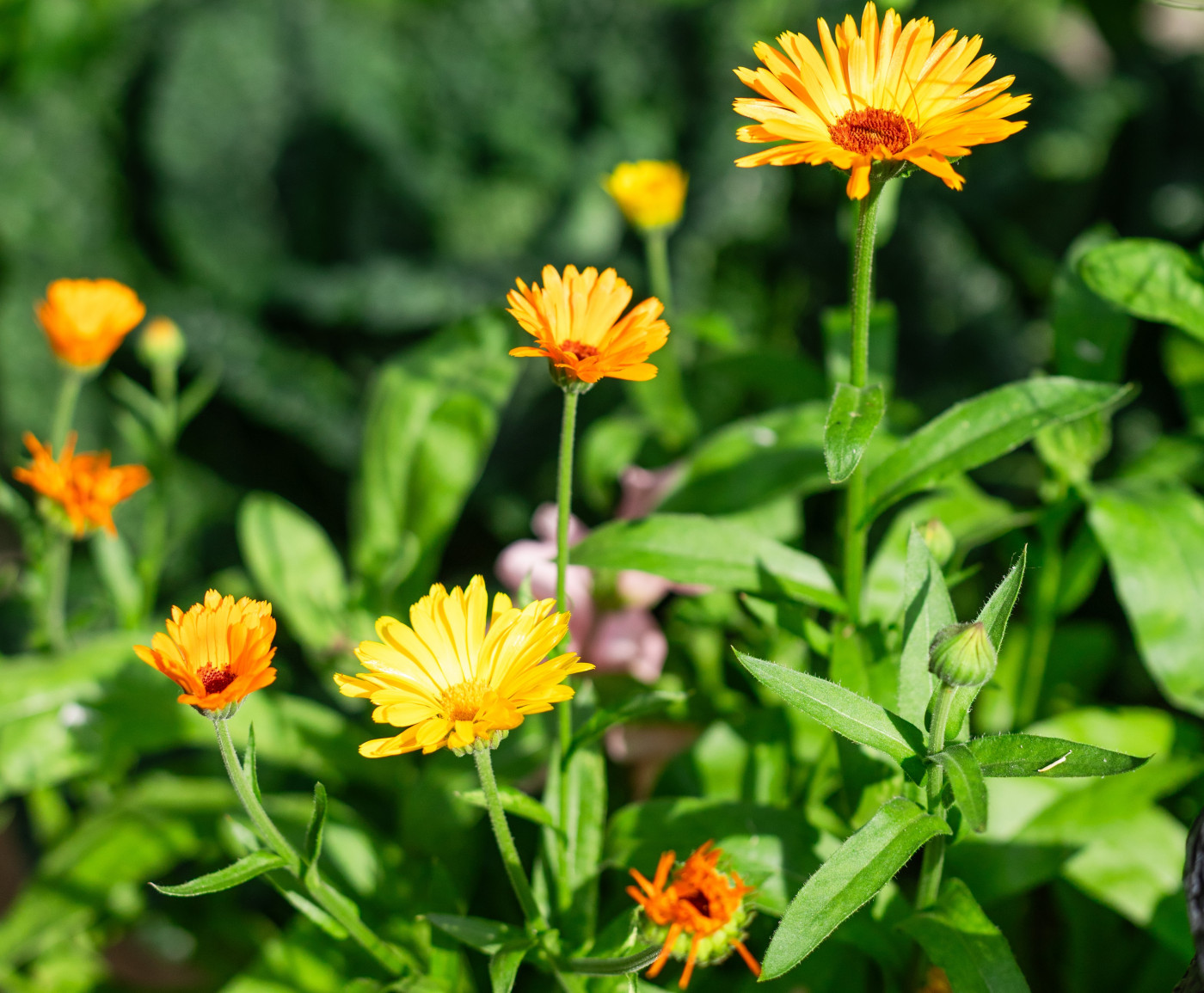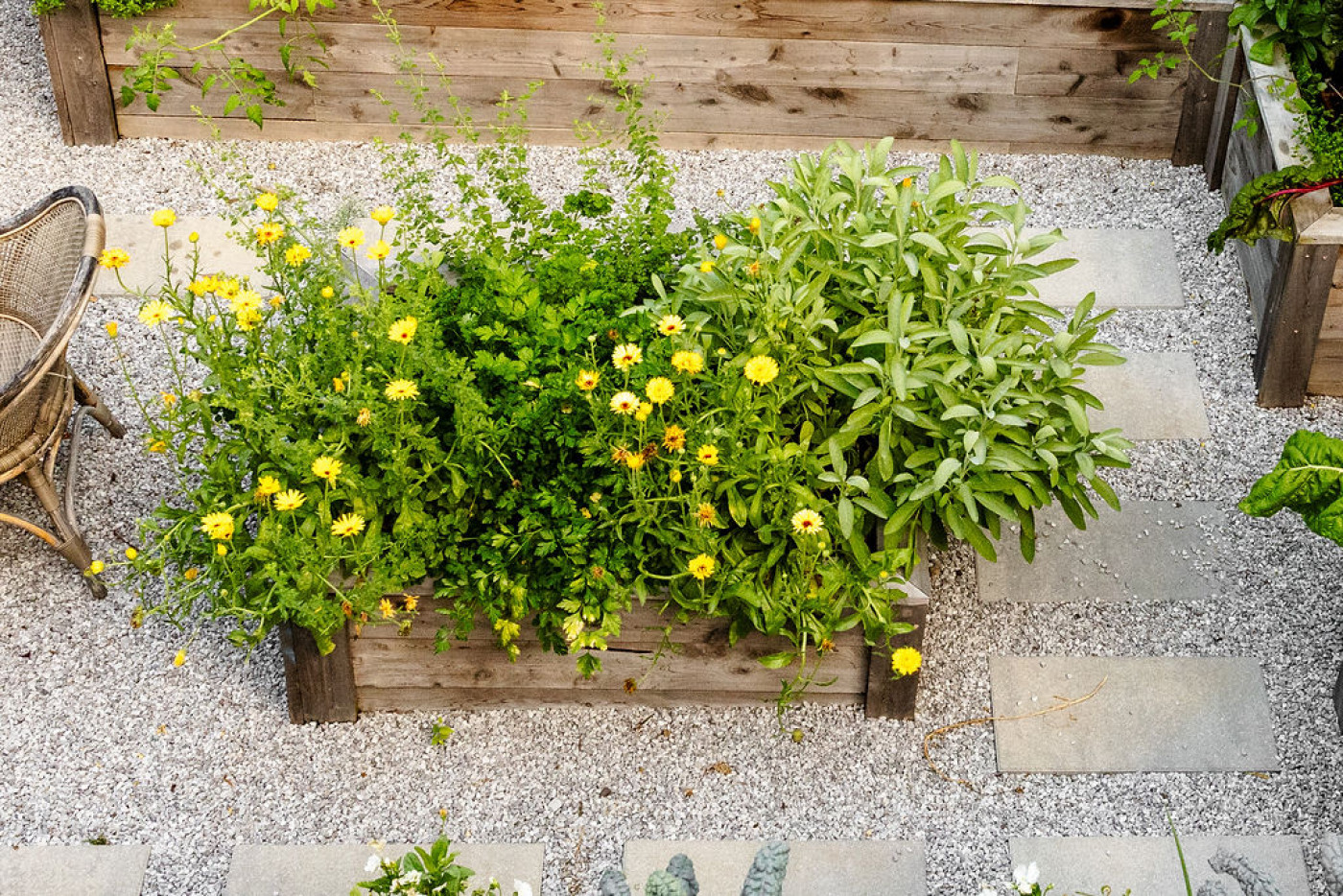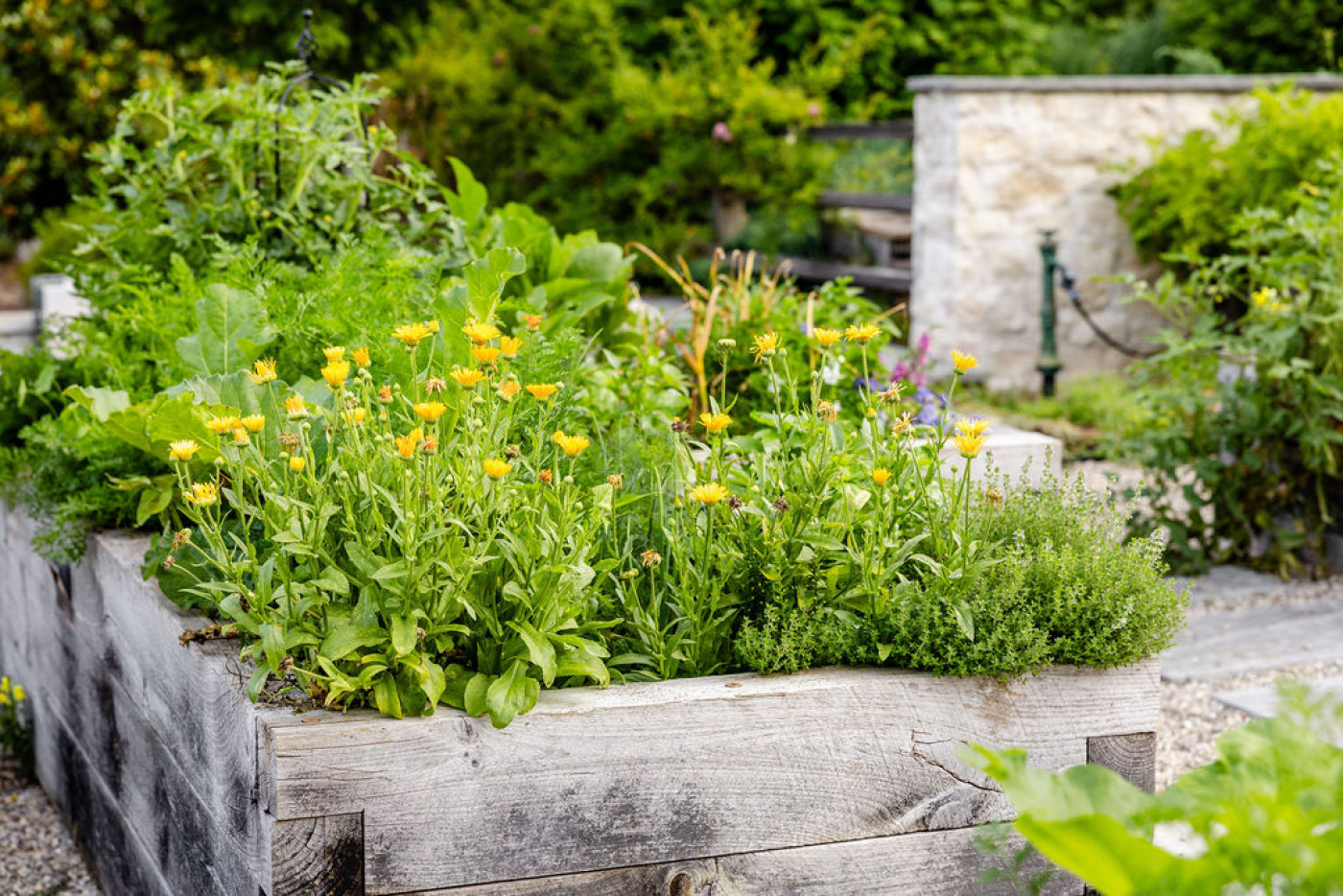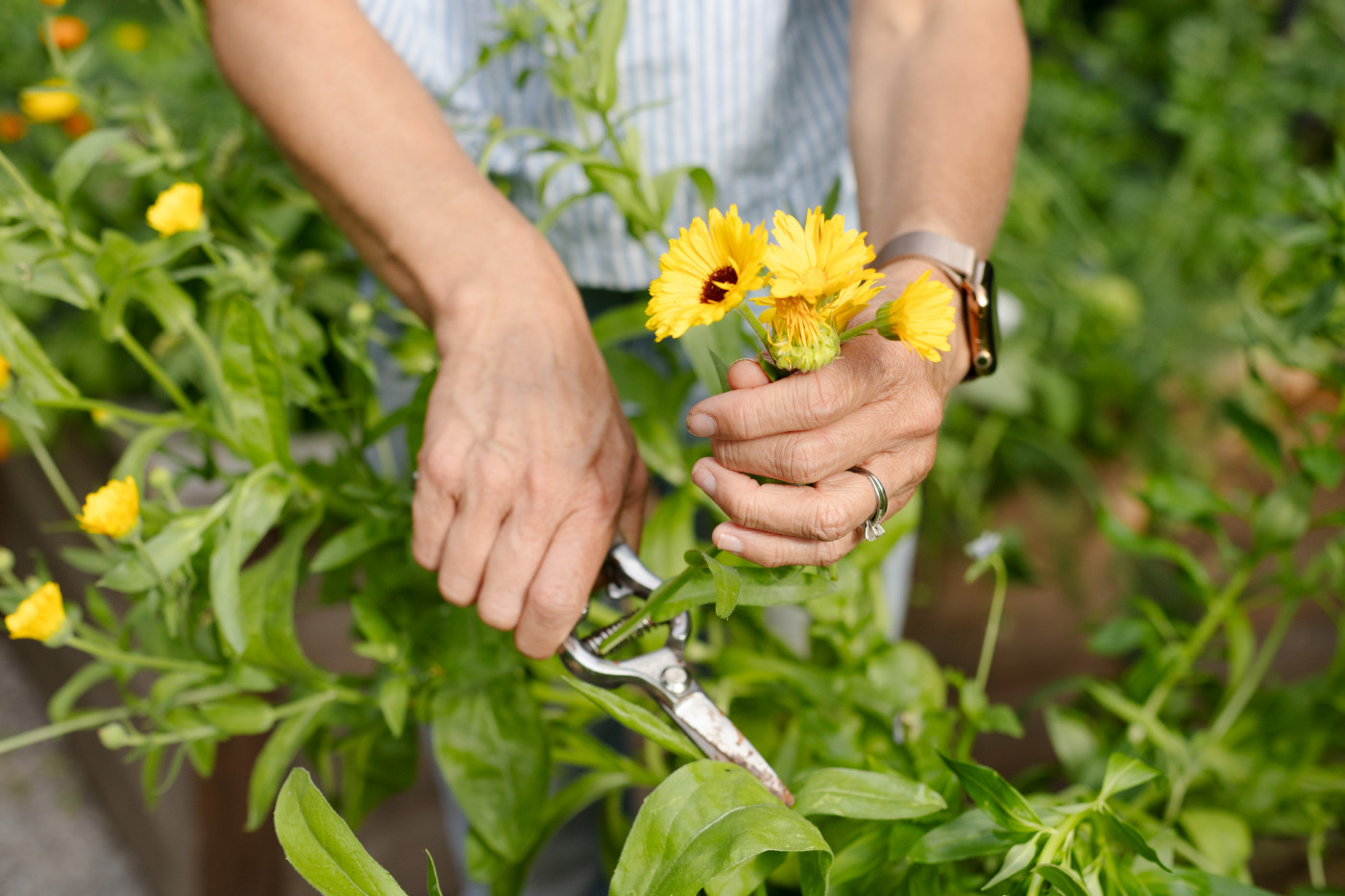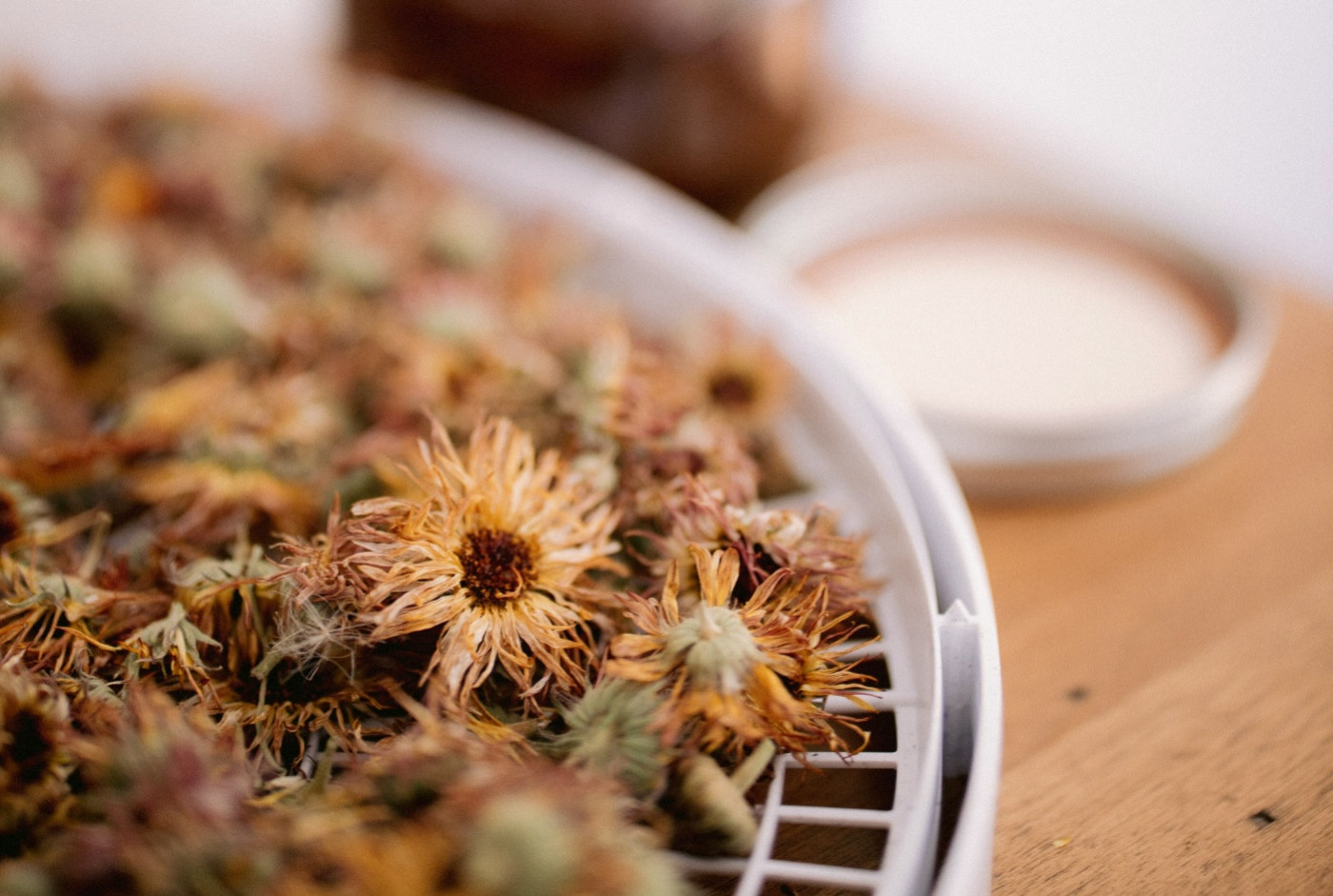Grow Your Own Calendula
Calendula is one of the easiest edible flowers to grow. It's in the same plant family (the Aster family) as other easy-to-grow plants like lettuces, sunflowers, daisies, and marigolds. (Even though calendula is often called pot marigold, they're two different, but equally low-maintenance, flowering herbs.)
Calendula will fill your garden with beautiful daisy-like flowers in shades of yellow, orange, white, red, pink, and cream. These flowers have a whole lot more going for them than just their looks. They're edible and have long been used to make medicinal teas, tinctures, and infused oils. They also can help maintain the overall health of your garden, especially if you're growing organically.
So whether it's for your wellbeing or your garden's, you'll definitely want to plant some of these pretty gals in your garden.
At a Glance
- Calendula grows best in the cool weather of spring and fall; it can grow throughout the winter months in places that don't get more than a light frost or two.
- Calendula is an ideal flower to grow in your vegetable garden because it attracts beneficial insects and helps control pests. It's easy to grow from seed and very low-maintenance once established.
- Calendula has a number of health benefits, as well, whether it's consumed as a tea or used as a salve. It's been shown to heal issues in the mouth, throat, and digestive tract, as well as on the skin.
When to Plant Calendula
Calendula loves the cool weather of spring and fall, but it can last through the summer months in some climates if it's well established in the garden before temperatures rise.
Calendula doesn't do very well in hot weather (above 90°F/32°C or so). If you've struggled to grow calendula before and were emphatically shaking your head when you read how easy it is to grow, it might have been too warm outside. Just remember "cool calendula" and get your plants set up when it's cooler outside.
Calendula plants won't survive a hard frost. That's why it's often treated as an annual flower even though it's technically a tender perennial.
Direct Sow
Since calendula germinates well in cooler weather, you can direct sow seeds outdoors a couple of weeks before your last frost date. (Check your frost dates here.)
Transplant
You could also start seeds indoors about 4 to 6 weeks before your last frost date. Transplant seedlings once the danger of frost has passed. This is a great way to give flowering herbs like calendula and chamomile a head start in your garden so that you can enjoy their flowers for longer while conditions are optimal.
Where to Grow Calendula
Calendula plants grow well in containers, raised beds, and even in-ground pollinator gardens. They're forgiving of poor soil conditions but grow best in soil rich in organic matter. They're also not too picky with their light. They can grow well in part shade, though they thrive in full sun.
I pop calendula in the corners of my raised beds to reduce exposed soil throughout the growing season and increase the plant diversity in my kitchen garden. Using low-maintenance flowers as a way to cover bare soil is an easy way to ensure less watering, less weeding, and less worrying. Calendula can even help protect your leafy greens from aphids!
Do you need any more reasons why you should pop this cheerful little flower wherever you have an empty spot in your garden?
The Best Calendula Companion Plants
Calendula offers so many benefits to your garden space—it's really the best companion plant for everything else that likes growing in the cool season.
First of all, calendula acts as a trap crop to protect leafy greens like lettuce and kale. A trap crop is simply a plant that attracts pests that would otherwise attack other garden crops. Basically, calendula serves as a decoy for your salad greens. It draws all the aphids and caterpillars its way with its bright, beautiful flowers so that those nasty bugs stay on the calendula stems and not on your future food. (Don't worry. Calendula flowers are still completely pick-able and edible even when aphids are hanging out on the stalks.)
Certain other pests won't be attracted to calendula at all; they'll actually be repelled from the garden by the smell of calendula all together.
Now, is calendula a magical form of pest control? No. Does planting calendula mean you'll never have pests again? No. Growing calendula is just one simple thing you can do to make garden pests a little less frustrating.
But I'm not done. Calendula doesn't just deal with pests. It also attracts beneficial insects. Its flowers are an open invitation to pollinators like bees and butterflies, plus pest predators like lacewings and parasitic wasps.
Plants to Grow Next to Calendula:
How to Grow Calendula from Seed
Calendula grows really easily from seed. It has good germination, and the seeds are nice and large (I always think of them as being shaped like little squids), so they're super easy to handle and space out.
If you're growing calendula in a container, make sure it's at least 6 inches deep and has a good drainage hole. Calendula likes water to drain from the soil quickly. Mix some compost into an organic potting soil.
If you're growing calendula in a raised bed, add a fresh layer of compost to the top of the soil in the planting area.
And if you're growing calendula in the ground, amend the top 6 inches of soil first with compost and coarse sand.
To sow seeds, you can sprinkle them throughout your garden or place them about every 6 inches or so. Lightly cover them with soil or compost; they really don't need to be planted very deep. Give your seeds a good watering in and then keep your soil moist but not wet while you wait to see those beautiful little green shoots appear.
You can expect to see your first little flower buds forming just 6 to 8 weeks after seeding.
Calendula Growing Tips
I do very little to care for my calendula plants. I even have calendula plants that popped up in my gravel pathways from seeds dropped last year, and they seem to be doing quite well without any help from me.
Besides watering it and maybe fertilizing it, all you really need to do is pinch back old flowers to encourage your plants to keep blooming. If you expect some light frost, you can protect the plants with a frost cloth or blanket overnight and then uncover them the next morning.
How to Water Calendula
This flowering herb doesn't require any special attention when it comes to watering. Give calendula plants about 1 inch of water per week, the same as most of the herbs and veggies you might be growing in your garden. Calendula doesn't like its roots roots sitting in water for too long, so make sure you have good drainage first.
How to Fertilize Calendula
I rarely add new nutrients to my calendula herbs, except for a quarterly installment of fresh compost or a little addition of earthworm castings. Flowering herbs like calendula and marigolds do really well when set up in a rich soil that's full of nutrients from the beginning.
If you feel like your flowers could use more nutrition, you can feed them a phosphorus-rich fertilizer once they begin to form flower buds. This fertilizer can be applied to the soil or spritzed on the calendula leaves.
The Gardenary Cool Season Garden Planner
The secret to cool season gardening is knowing your timing, picking the right crops, and staying consistent—this planner walks you through it, step by step.
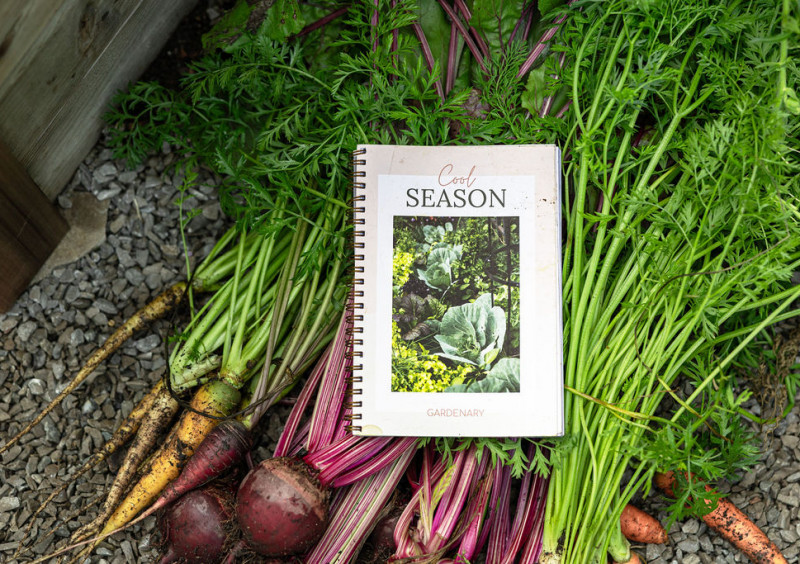
How to Harvest Calendula Flowers
The best time to harvest calendula is in the morning, once the dew has dried. I like to harvest blooms a couple days after they've opened, once all the petals are fully revealed but before they start to dry up.
Use a clean pair of scissors or pruners to cut at the base of the flower stem, just above where it branches off from another stem. You can bring these flowers inside as cut flowers, or you can harvest the flower head itself and place it in a strainer to dry if you're interested in making calendula tea or salve.
Flowers that have already started to dry up can still be used to make teas, but their flavor won't be quite as good as fresh petals.
Leave the rest of the plant to form more flowers for you.
How to Enjoy Calendula Flowers
Each little petal is edible. Calendula has a peppery, somewhat bitter taste. You could toss fresh petals into salads or use them as garnishes on desserts and pastries. You could add it to herb butter or gourmet dips. The way I most often enjoy calendula is by making calendula tea.
I dry my blooms first in a dehydrator. If you don't have a dehydrator, you can spread your flowers out on a tray or screen, set it somewhere cool and dry, and let them lose all moisture over the next 14 days or so. Make sure flowers are completely dried up before you put them in a jar to avoid mold or mildew.
I typically store all my dried flowers in an amber-colored jar until sweater weather arrives. Then, I get a little taste of the garden all winter long by sipping on my calendula tea.
Outside of its edible uses, you can also make a healing salve, massage oil, and tinctures with your calendula. I love this list of ideas on how to use calendula blooms from The Nerdy Farm Wife.


Calendula Benefits
Calendula isn't just good for your garden, it's good for your health, as well. It's known for its antioxidant and anti-inflammatory properties. Long used in herbal medicines to treat skin conditions, calendula now has research to back up its ability to aid in healing injuries to body tissues. It also has anti-fungal and antimicrobial properties that can help prevent infection. For these reasons, calendula salves are often applied externally to burns, minor wounds, rashes, and even diabetes-related ulcers.
When consumed, calendula offers antioxidants, carotenoids, and flavonoids that can potentially help fight cancer, reduce inflammation, protect against heart disease, and ease sore muscles. Calendula's even been shown to heal issues in the mouth, throat, and digestive tract.
Note: Calendula can cause an allergic reaction for some and isn't fully tested yet for pregnant or breastfeeding women, so be sure to test small amounts before going crazy for calendula.
How to Save Calendula Seeds
In the late summer or early fall, leave a couple faded flowers on your favorite calendula plants to dry fully so that you can save seeds for next year. Saving your own calendula seeds can put you on track to grow calendula for free for the rest of your life. Follow these simple steps to save your own calendula seeds.
Once you've collected seeds from spent flowers, you can either sprinkle them in your garden like confetti and lightly cover them with soil to let the garden "save" them for next year, or you can store them inside. If you're bringing your seeds inside, store them in a cool, dry place for next season.
Repeat next year, and that's how you get calendula plants for life!
Even if you don't go through these simple steps to save your seeds, you'll probably still end up with more calendula plants next year, from seeds that dropped onto your garden or even your gravel pathways and then hung out there over the winter. Calendula is a powerful self-seeder in the garden. As soon as the temperature is right in the spring, dropped seeds will germinate and you'll get volunteer calendula plants.
Time to Grow Some Calendula!
I hope you enjoy growing this beautiful little flower, with all its extra benefits for your garden and for yourself.
Thanks for helping to make gardening ordinary again!



